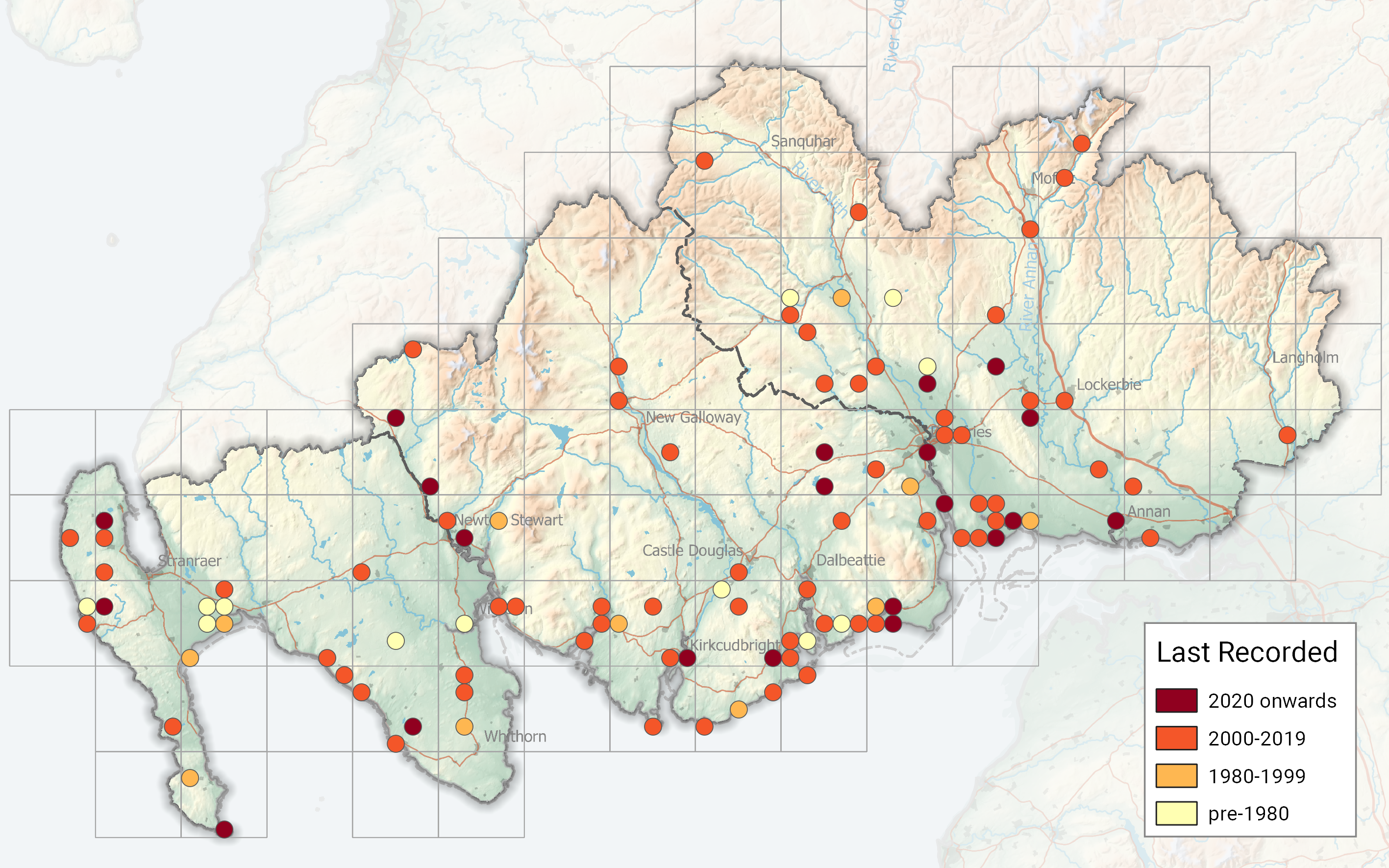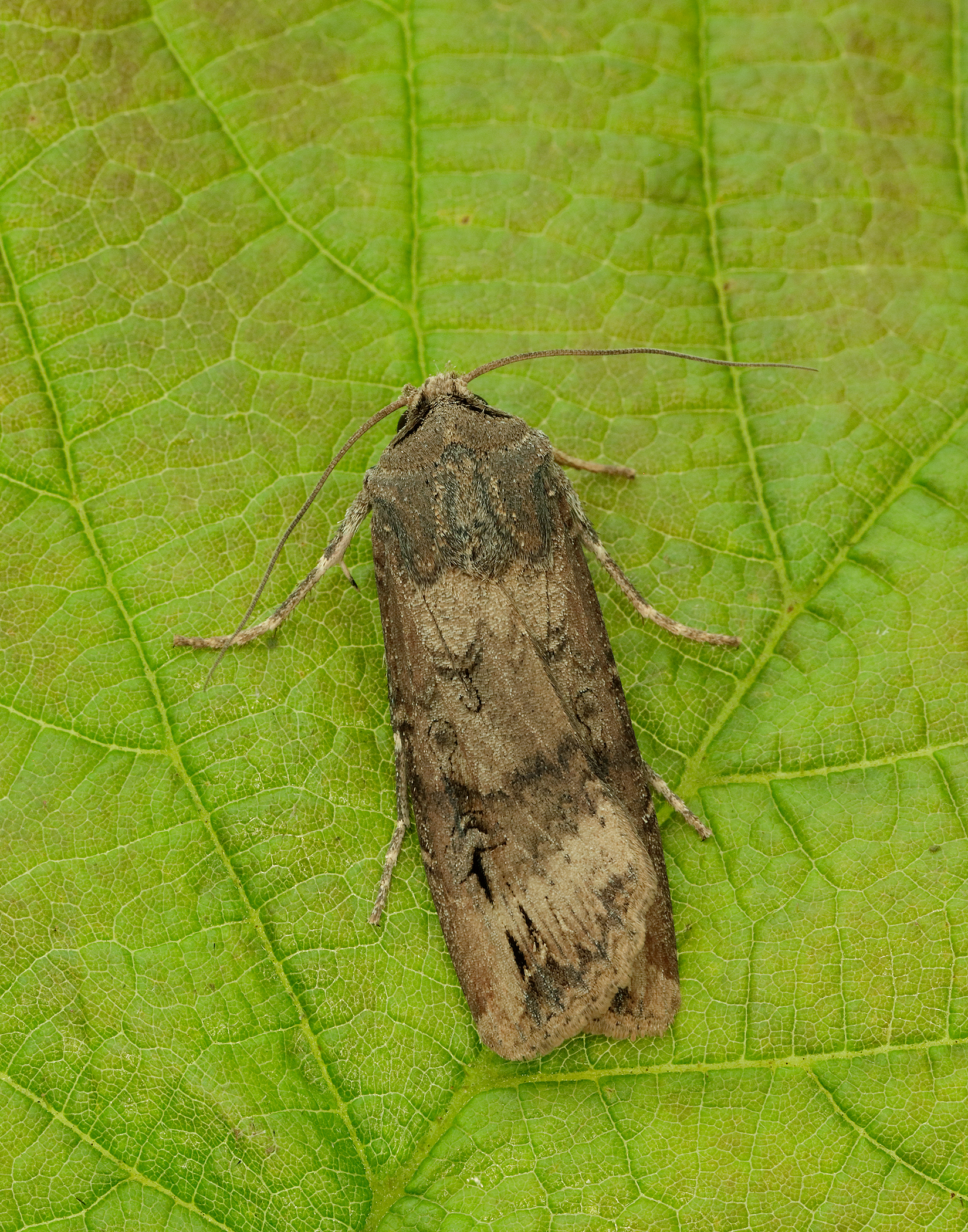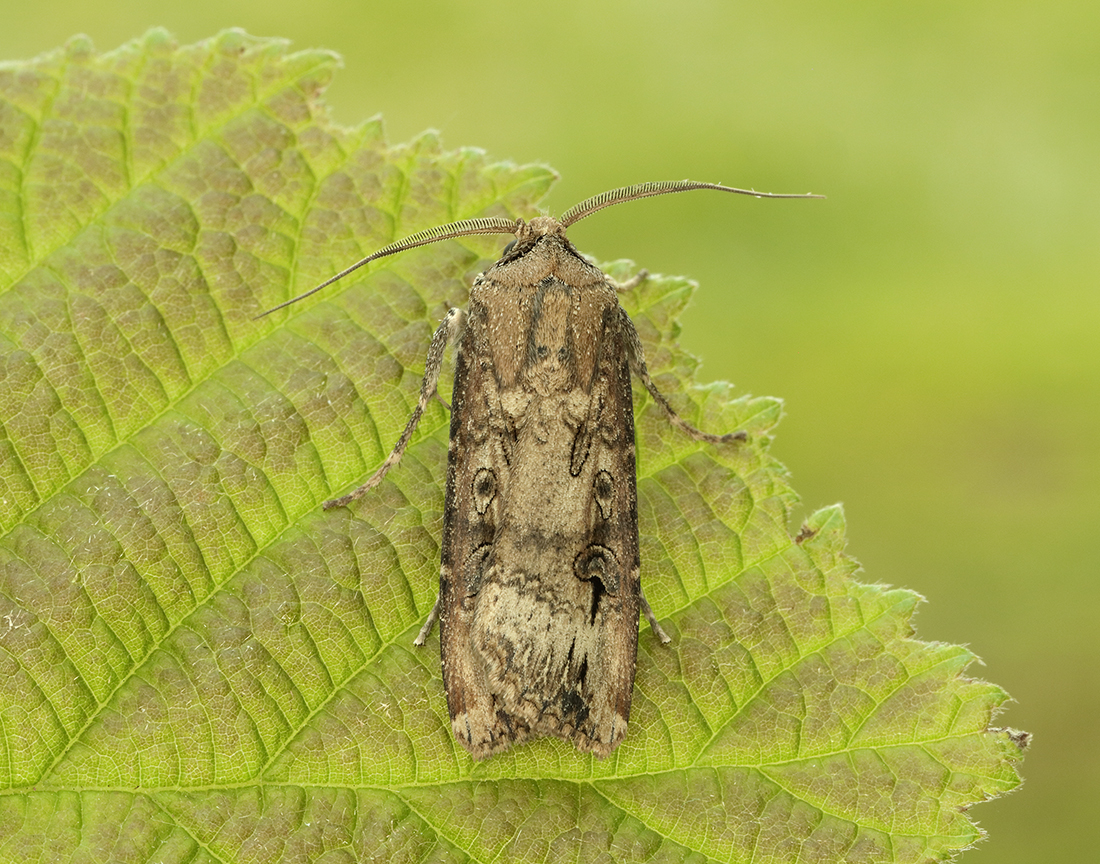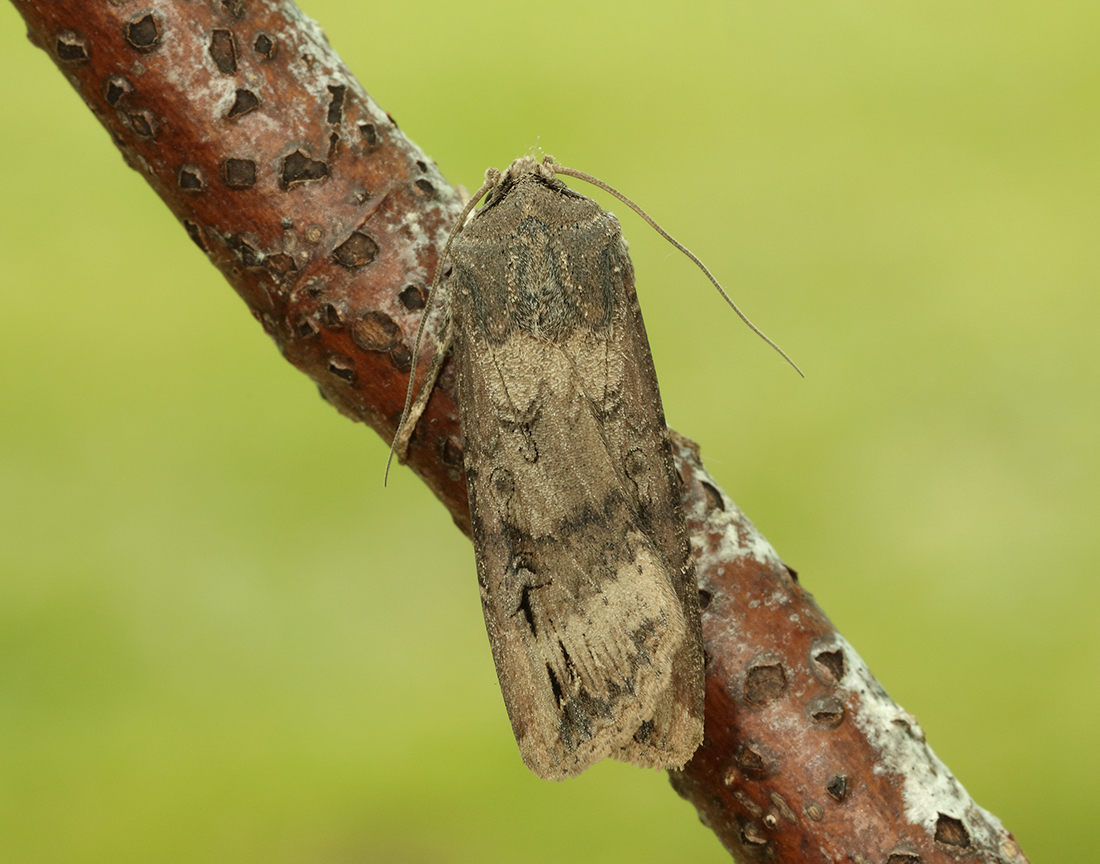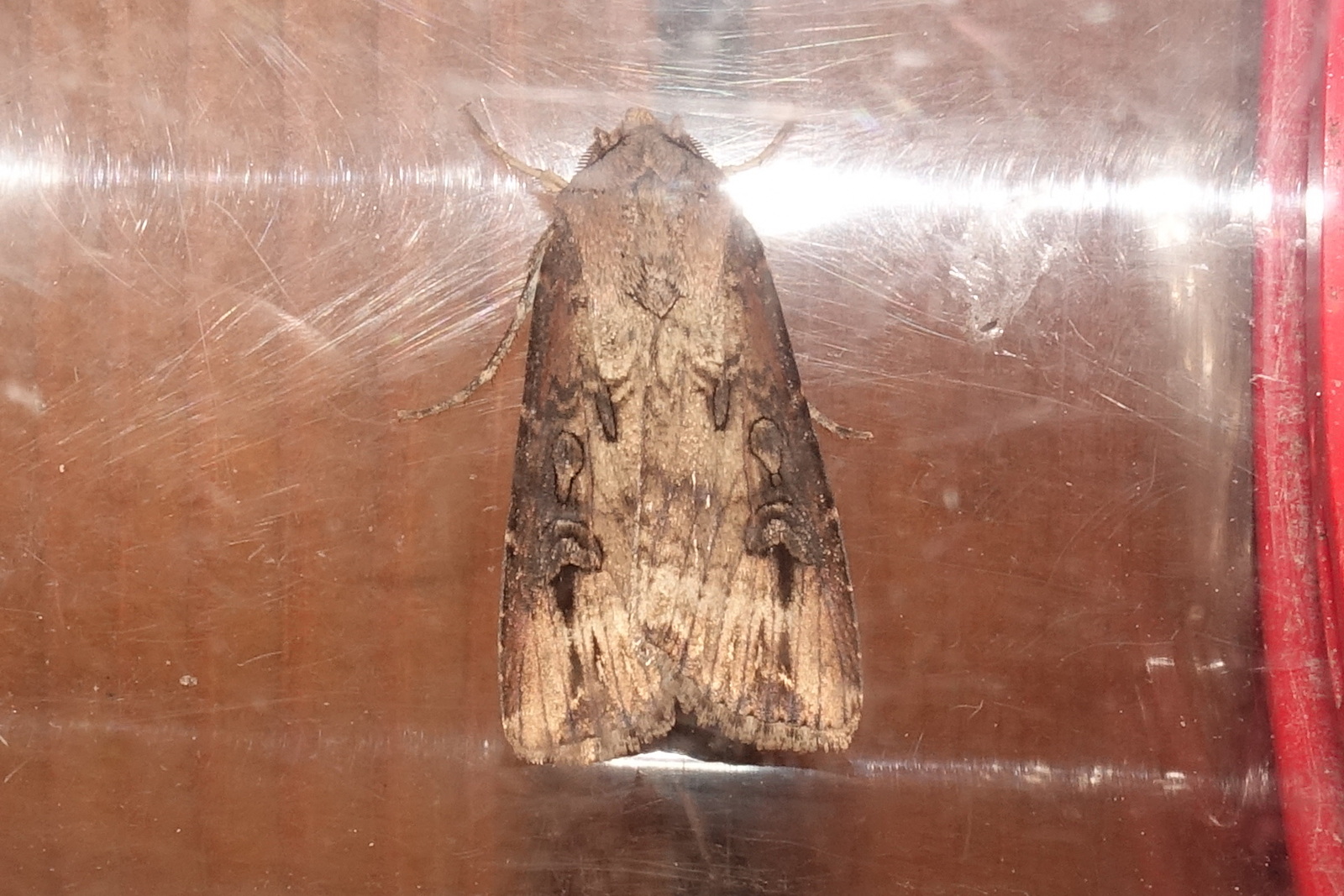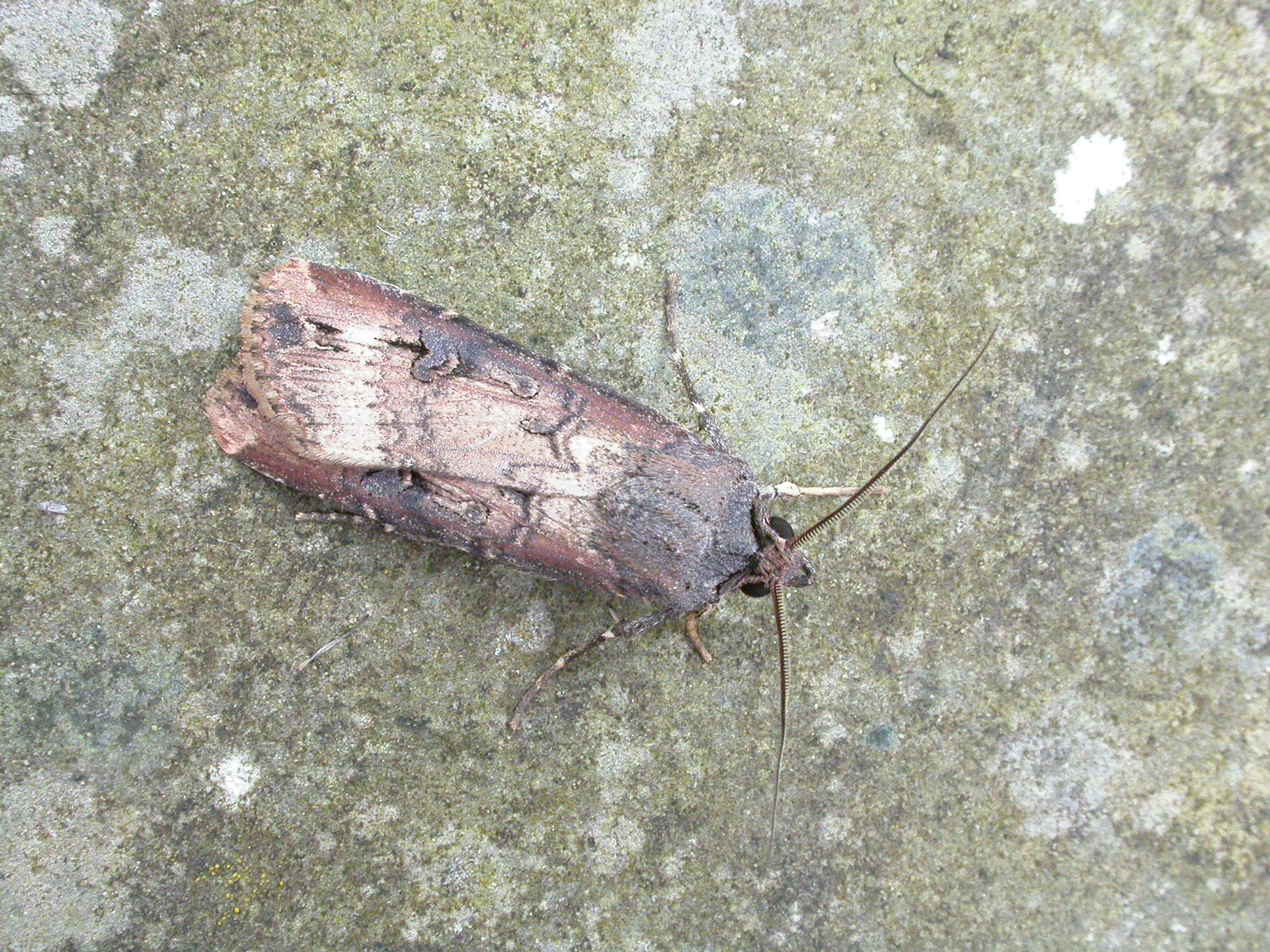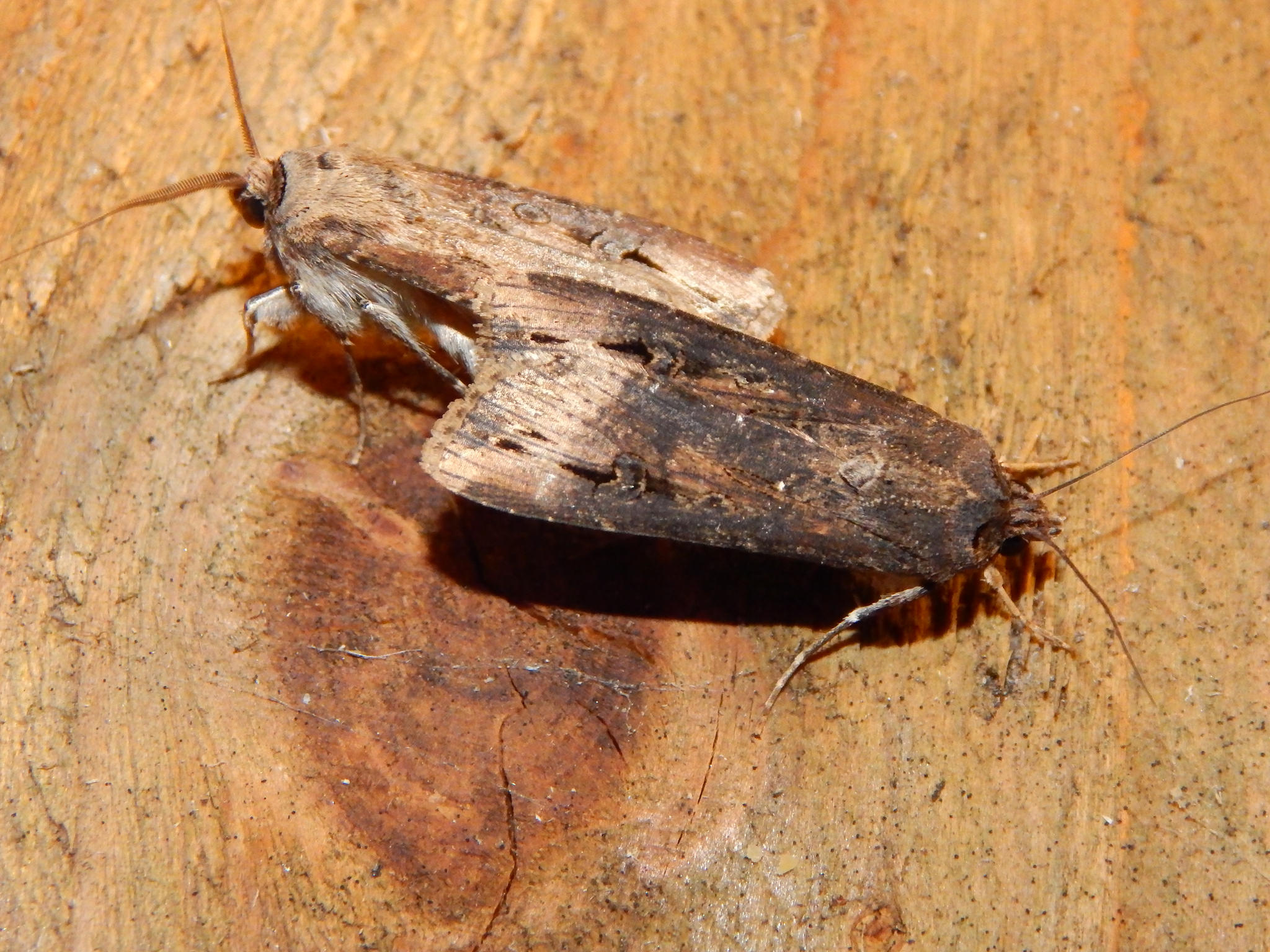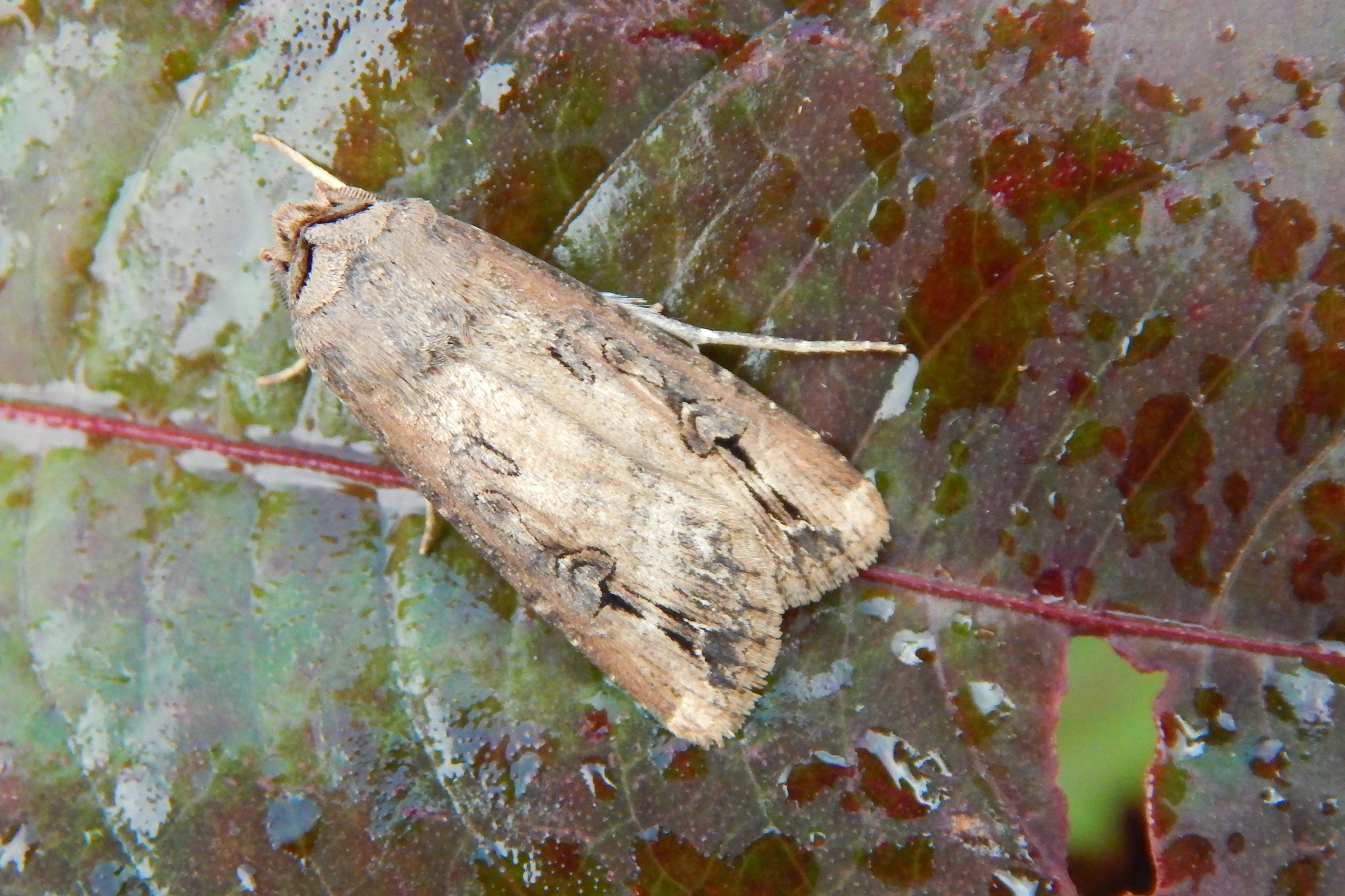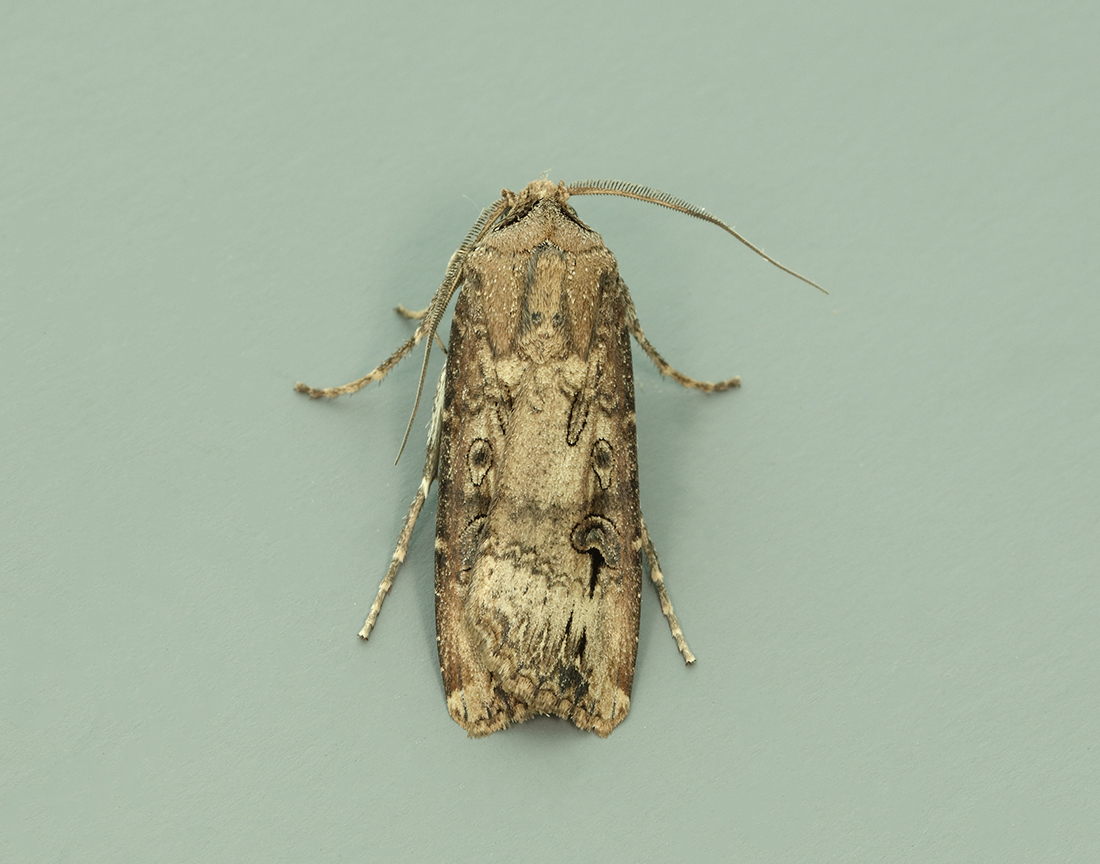Identification
Recognised by size and shape together with black dart protruding from the kidney-mark to the termen, and two other small darts opposite pointing up from the termen.
Recording Method.
Attracted to light, also comes to sugar and flowers.
Life cycle
Reported in most months of the year, but main passage is in the autumn.
Larval foodplants
Larvae feed on a variety of herbaceous plants.
Habitat
Most habitats, but especially coastal.
History
Lennon (1863) had found it on Kirkconnell Moss (VC73). Douglas Robinson (1870-71) under A. suffusa had found this species not very common at all around Almorness (VC73). Gordon (1913) stated it to be generally distributed, being sometimes common at sugar around Corsemalzie, from mid-June to late September 1895. He had also found hibernated specimens in April, 1899 and 1906 on sallow blossom. Latest was 23rd November 1906.
Evans (1915) was informed by D. A. Mowat, keeper at Killantringan Lighthouse, Wigtownshire, that a notable “rush” occurred on the night of 19th September 1913, which included 42 Dark Sword-grass out of 356 moths between 22:00 and 23:00 hours. The name suffusa has been used for various moths throughout the history of moths, but is believed to refer to this species.
Sir Arthur Duncan (1909-84) during his lifetime had found it at Closeburn, Tynron and Castlehill, Dumfries (all VC72). Pelham-Clinton found it at Glenluce (VC74) in the late 1950s, and Palnackie and Rockcliffe (VC73) in the 1960s.
During 1976-90 Rothamsted data was scarce with only eleven records, but from five of the stations, the Wigtownshire ones not recording it. Regular trapping at Kirkton, Caerlaverock (VC72), Cally Woods and Mersehead RSPB (VC73) during 1992-2010 yielded most records, but it was also caught at a number of other widespread sites across the region.

